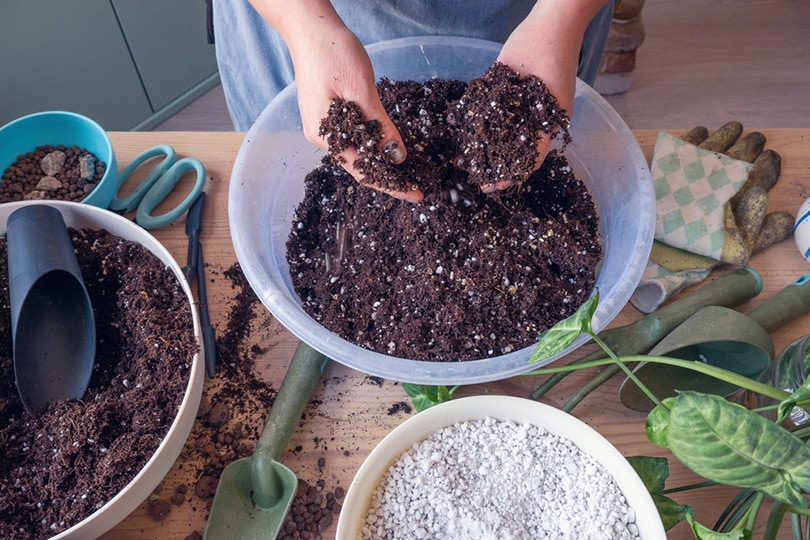Should I Add Mycorrhizae to My Soil? Benefits, Facts, & FAQ
-
Lindsey Lawson
- Last updated:

When you find yourself searching for ways to make your garden healthier and more productive, there are a lot of options to consider. One way to organically enhance soil fertility is using mycorrhizae, which are natural fungi that have a symbiotic relationship with the roots of many types of plants.
The plants that do have a symbiotic relationship with mycorrhizae can greatly benefit if you add it to the soil. In this article, we will go over all the ins and out of using mycorrhizae for your plants.
What Is Mycorrhizae?
Mycorrhizae is a form of fungus that cannot live unless it is connected to the roots of a plant. This symbiotic connection benefits both fungi and plants in many ways. About 90 percent of all land plants benefit from mycorrhizae.
The plant’s roots are where the fungi anchor and produce their threads, called hyphae. The roots are a source of nutrients that allow the fungi to grow. All the while, the fungal hyphae act as a root system for the plants and increase the nutrient absorption and water uptake from the soil.
Benefits of Using Mycorrhizae
There are plenty of benefits associated with using mycorrhizae.
- Promotes healthy plant growth
- Results in darker foliage
- Promotes higher crop yields and more abundant blooms
- Enhances resilience to environmental stressors
- Improved water uptake and increased drought resistance, and less water demand
- Reduces the risk of transplant shock
- Increases plant disease resistance
- Decreases the accumulation of toxic contaminants in crops
- Improves soil fertility and overall structure
Frequently Asked Questions
Can I Use Too Much Mycorrhizae?
Since mycorrhizae is not a fertilizer it cannot burn your plants like products high in nitrogen can. There is no such thing as “too much” mycorrhizae when it comes to the safety of your plant. If excess fungi are added to the soil and are not able to form an association with plant roots, they will simply die off.
When Should I Use Mycorrhizae?
Mycorrhizal products are often used when sowing seeds, during transplant, or inoculating a garden bed before planting takes place. There are a few plants that are described as non-mycorrhizal, meaning they don’t form a symbiotic relationship with one another. These plants include blueberries, spinach, beets, azaleas, and other ericaceous plants, and those in the brassica family like cabbage, broccoli, and mustard.
How Often Should I Use Mycorrhizae?
It’s best to follow specific manufacturers’ instructions when using a certain brand of mycorrhizae. Generally, it can be applied every 2 to 3 weeks. It can take up to 10 days for the mycorrhizae to start colonizing.

Can Mycorrhizae Be Used with Fertilizer?
Yes, mycorrhizae can be used alongside traditional fertilizer. This fungus is not a fertilizer and allows for excess nutrient absorption through the soil, which includes the added nutrients found in your preferred fertilizers.
How Much Mycorrhizae Should I Use?
It is recommended that you use the amount of mycorrhizae as recommended by the manufacturer. It can either be put in the water, applied directly onto the roots, or put in the backfill soil.
Conclusion
It’s a good idea to add mycorrhizae to your soil, as it forms a mutually beneficial relationship when associated with your plant’s roots. About 90 percent of plant life benefits from these fungi and reaps the rewards. Certain plants are considered non-mycorrhizal but those that do have increased nutrient absorption, better growth and yield, higher resilience, and more.
Featured Image Credit: Cem Selvi, Shutterstock
Contents
